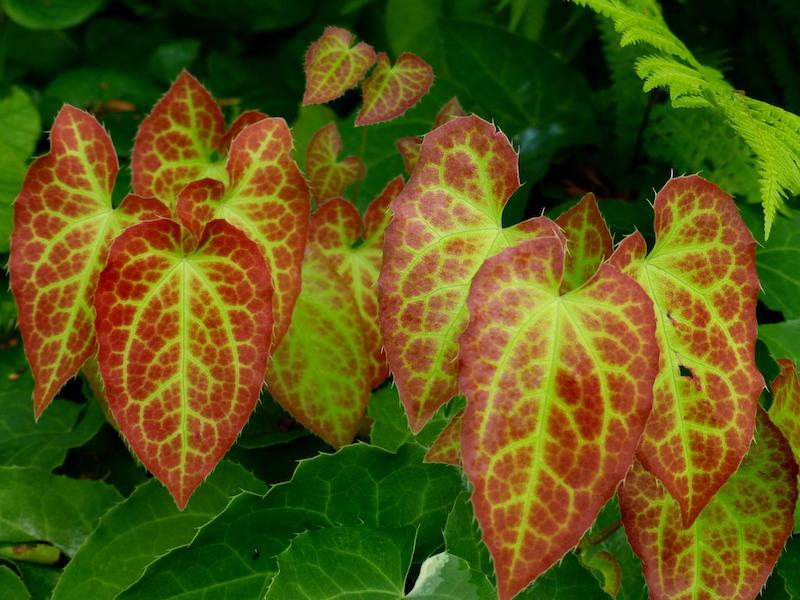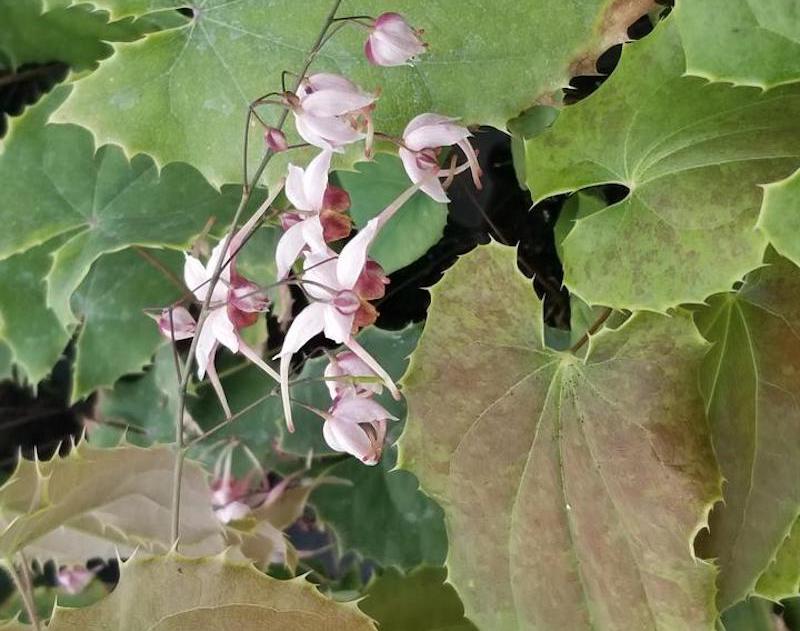Barrenworts, or “Bishop’s Hat” as they are also aptly known, are a group of elegant shade-loving perennials that grow well in pots or planters. Loving a cool and shady spot, barrenworts are ideal for growing on a covered deck or when used to brighten up a dark and dingy corner with their colorful foliage and blooms.

Planting Barrenwort in Pots
As with a lot of perennials, barrenworts are best planted in the spring or autumn. Being an almost drought-tolerant plant, barrenworts must have a container with adequate drainage holes, as they hate sitting in wet or waterlogged soil, especially during the winter.
When it comes to planter construction, it is best to choose a resin plastic, rather than ceramic or terra cotta, which may crack during the colder months. As barrenworts are low growing with a spreading habit, we recommend a planter with a minimum 12-inch diameter, depending on the expected mature size.
Barrenworts tend to be shade loving and do best in full to partial shade. However, some varieties can cope with more amounts of light.

Best Soil For Barrenwort in Pots
Barrenworts require a neutral to slightly acidic soil that is free draining and will benefit from any organic matter added to the mix. Planters are sometimes filled with a bottom layer of rocks to improve drainage. However, this is not necessary and may stunt root development. We do recommend a layer of mulch to help conserve moisture and suppress any weeds.
Caring For Barrenwort in Planters
Barrenworts can thrive in planters if given the right care, especially whilst getting established. The key points to remember are that the plants receive the correct amount of light and water and the right soil conditions.
Watering Barrenwort in Pots
When mature, barrenworts can tolerate dry conditions and a certain amount of neglect. Establishing plants, on the other hand, require the soil to be kept moist for at least the first year, especially when grown in a planter, which will dry out more quickly. As a rule, if the top inch of soil is dry, then the plant will need watering. Do not be tempted to overwater though, as this may lead to the roots rotting.
Fertilizing Barrenworts in Pots
As a woodland ground cover plant, barrenworts will benefit from an addition of organic matter or leaf mold to the soil at the time of planting and again in spring. When grown in planters, it is recommended to add a slow-release fertilizer in spring, which will replace any nutrients lost during the previous season.
Winter Care For Barrenworts in Pots
Barrenworts are hardy plants, although some varieties are less so than others. As a perennial, they require a period of cold weather to enter dormancy, but planters may need to be brought in under cover for protection from the worst of the winter weather, depending on your USDA zone. As the temperatures fall, any watering can be reduced, and if the foliage dies back, this can be left on to protect the crown and removed in spring.
Growing Barrenworts Indoors
Being a perennial, barrenworts tend to only be grown outdoors as they require a period of dormancy to encourage fresh new growth to appear in spring. Disliking direct sunlight, especially in the afternoon, which can scorch the foliage, they prefer to be placed in a shaded spot such as a north-facing corner or covered porch.
 |
Author Chris Link - Published 01-12-2023 |
